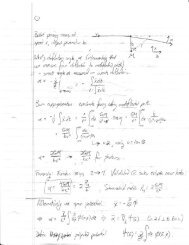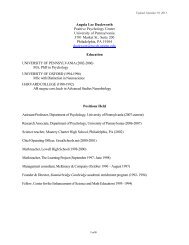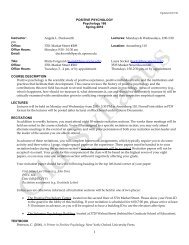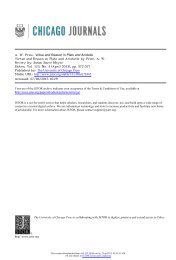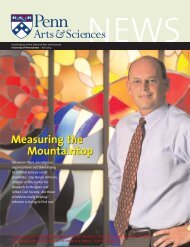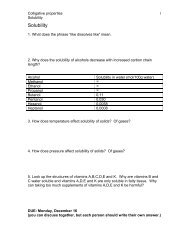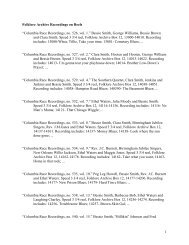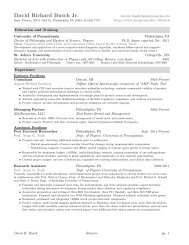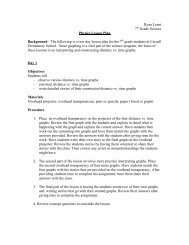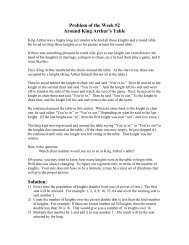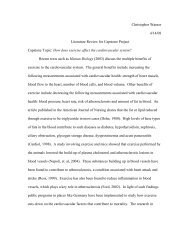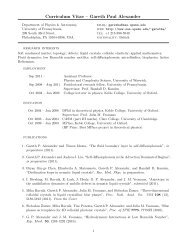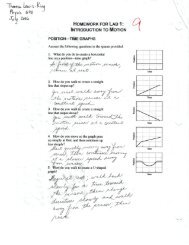Full Lesson Plan - School of Arts & Sciences
Full Lesson Plan - School of Arts & Sciences
Full Lesson Plan - School of Arts & Sciences
Create successful ePaper yourself
Turn your PDF publications into a flip-book with our unique Google optimized e-Paper software.
Assessments:<br />
The students will then begin to fill the water bath with crushed ice. They will<br />
record the temperature, observe the balloon and add more ice. All will be done<br />
over equal time intervals (30 seconds for 5 minutes).<br />
As they did in part a, they will record all information in their lab journals. They<br />
also will draw a picture <strong>of</strong> what they think the gas inside the balloon looks like<br />
after the five minutes <strong>of</strong> cooling. They will compare this to the drawing they<br />
made <strong>of</strong> the gas before they added the ice and to their pre-class drawing <strong>of</strong> a<br />
cooled balloon.<br />
After the lab (that day if time permits or the following class), we will have<br />
a discussion about what the students observed and what they think may have<br />
caused their results. They will also record their thoughts and experiences with this<br />
lab in their lab journals. I will serve as a moderator/guide and not an answer<br />
person. I want to see what their thoughts are and that they arrived at their<br />
conclusions on their own.<br />
1. The students will be given follow up questions dealing with their lab that<br />
will be used as an assessment. The questions will be phrased in a way where<br />
I will be able to see if they understand why the balloon increased in size in<br />
the hot water and decreased in size for the cold. I want to make sure that<br />
they realize that the volume <strong>of</strong> the gas inside the balloon is increasing and<br />
decreasing.<br />
For example:<br />
• Were your predictions from the pre-class correct? Explain<br />
• Based on your observations, what happens to a balloon<br />
when heated and when cooled?<br />
• What affect does the temperature have that causes the<br />
balloon to act this way?<br />
• Using this lab and what we learned about Boyle’s Law in<br />
our previous unit as a basis, explain why the soda can got<br />
crushed in our opening activity?(If Boyle’s Law is taught<br />
after Charles Law you can just focus on their<br />
explanations from the temperature and volume viewpoint<br />
now, and readdress the pressure at a later point)<br />
2. They will also be given a question on their unit test that takes Charles’ Law<br />
and puts in a “real world” context.<br />
For example:<br />
• Why do the tires on your car appear to be deflated in the morning<br />
after a cold night? How does this show Charles’ Law?<br />
Or<br />
3



